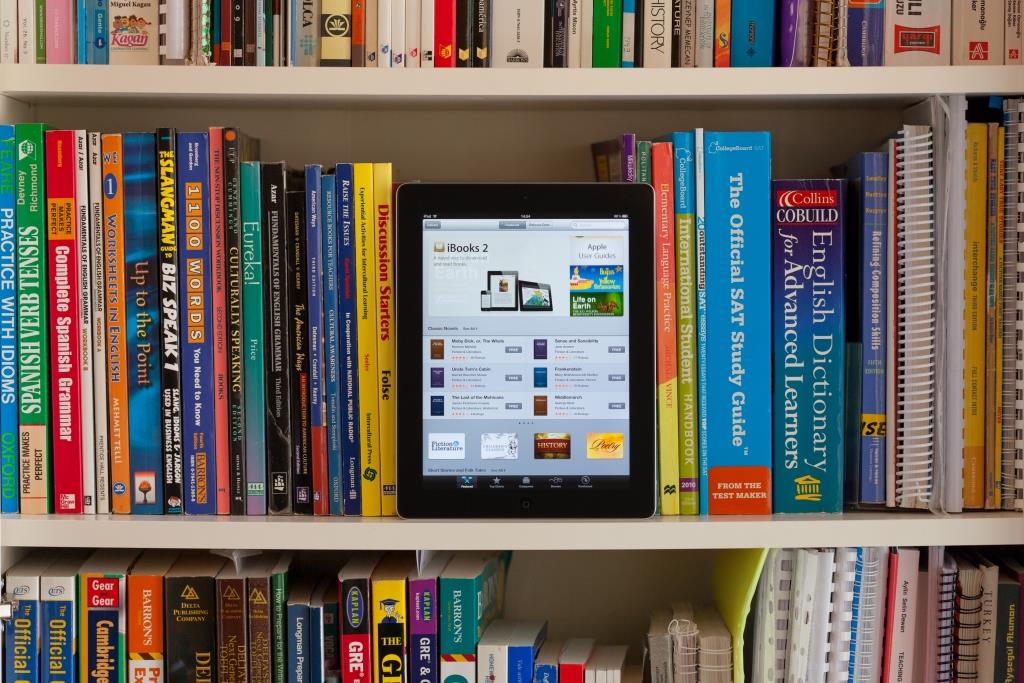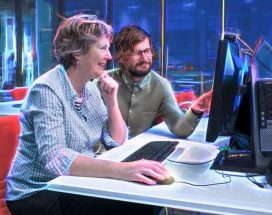
Libraries are undergoing a historic digital transformation as they seek to keep up with changing community expectations, but a funding shortfall presents an added challenge.
No longer merely repositories of books or places to nestle on a rainy day – Australia’s libraries have become community hubs, technological educators and home to extensive digital collections.
The City of Adelaide’s library is one public library at the forefront of this digital shift – evidenced through recent initiatives including a digital hub and media lab.
The digital hub provides a computer literacy program offering the latest training on iPads, smartphones, tablets and the internet, while the media hub supports the creation of documentaries, animation, photography and graphic design.

Jessica Curtis, coordinator of library creative and digital programs at Adelaide Library says the digital literacy programs have helped foster a sense of community while supporting digital skills in the community.
“We’ve received some really fabulous feedback from participants who have been able to connect with family members that might be living overseas or interstate,” she told Government News.
“We’ve also received feedback from teachers and schools around South Australia about how libraries have supported the STEM agenda in training students.”
Anne Rundle, manager of culture and lifelong learning at Adelaide Library, says that as the popularity of digital resources increases, librarians often direct residents to content such as magazines and audiobooks on tablets.
“The majority of libraries would say that they’ve seen a downturn in the number of loans of traditional material such as physical books, DVDs and CDs. We take digital literacy and training to another level, in that we take it across everything we do,” she said.
While the type of services libraries now offer continues to change in response to user expectations, libraries are still about supporting people’s learning in community spaces, Ms Rundle said.
almain and Leichhardt libraries in NSW’s Inner West have also tapped into changing community expectations by offering a fortnightly smart device group called Get Smart where locals can learn more about how to use their smart devices.
The library is also running general and advanced computing classes and a coding class during the school holidays.
Caroline McLeod, group manager of library and history services at Inner West Council told Government News that libraries have a critical role in improving digital literacy. She said:
“It’s an incredibly valuable thing that libraries are offering because otherwise people would have to do paid education or ask their families, and not everyone has family who can teach them.”
While staff at the Inner West’s libraries have been able to quickly learn new digital skills, the greatest challenge has been keeping track of new technology, Ms McLeod said.
“The range of technology that’s available and the pace it’s changing poses a challenge in terms of how quickly you can update your programs and infrastructure to stay ahead of the game.”
A lesson in mass digitisation
But it’s not just local libraries that are transforming with the digital age.
The National Library of Australia (NLA), Australia’s largest reference library, has undergone significant change since its creation in 1961.
Today its home to one of the largest digital collections in the world, with more than 90 per cent of its collection catalogued. The significance of this shift can’t be understated, said David Wong, the NLA’s assistant director general of IT.
Community expectations have fast-tracked the push for access to digital materials and forced the library to evolve its services, he told Government News.
“We really have had to think about what our users expect and from there make the investment in digital,” he said.
For the NLA, the pace of change and consumer expectation propelled a threefold response: assess the type of content consumers want; collect content more broadly to include digital content and deliver content and services through the web.
“The type of content we need to collect, the kind of material we think people are going to be interested in today versus tomorrow is quite a different range of information,” Mr Wong said.
Mass digitisation has been a huge challenge for the library, requiring a monumental “cultural shift” for staff, Mr Wong says, adding that change must be introduced slowly to mitigate any “change whiplash.”
“Within the library we have established workflows and they’re optimsed; staff are comfortable with how things operate. Digital has turned everything on its head,” he said.

“There’s a lot of talk about disruption and agile processes but that all requires a big change to how we’ve worked over the decade.”
This challenge resonates at a local level too, with Ms Rundle noting that the biggest challenge for Adelaide Library has been keeping staff updated on digital skills.
“One of the hardest things is that you have to be committed to re-training staff… Staff need to be focused on their skillset, they have to be lifelong learners, committed to training and volunteer training,” she said.
Funding shortfalls
However, as libraries come to grips with digital transformation a funding shortfall is an added challenge for many.
The NSW Budget this year saw the State Government cut more than $5 million from public libraries and wipe the grants program dedicated to public library infrastructure.
It is the latest in a series of reduced funding for public libraries across Australia. Western Australia’s book stock saw a $1.7 million funding cut in 2016 while South Australia’s libraries also recently experienced a funding cut.
In May, the NLA made a submission to the Australian Parliament’s inquiry into Canberra’s national institutions arguing that staffing caps and efficiency dividends have had a significant impact on the library.
According to Mr Wong, the funding shortage is having a significant impact on libraries ability to adapt to change. He argues:
“Funding for the library sector across local, state and national libraries is on a downward trajectory. The value of libraries needs to be known and understood.”
The President of @LGNSW @ClrLindaScott and @nswpla President Clr @DallasJamesTout launching a statewide push for increased funding for NSW public libraries. Join the call for increased investment in our public libraries:https://t.co/FaiNdG21qV #renewourlibraries #localgov pic.twitter.com/SS6dyQ0kfc
— RenewOurLibraries (@renewlibraries) August 1, 2018

Sue McKerracher, CEO of the ALIA also identifies the funding shortage as one of the greatest challenges for the sector.
“We have the willingness, enthusiasm, skills and need from library users for this move to digital but of course what we don’t always shave is the funding,” she told Government News.
But Mr Wong is optimistic that despite the funding shortfall and challenges of digitisation, the role of local libraries as community hubs and valued public spaces will continue.
For Ms McKerracher, the digitisation of content will continue to support libraries’ role as valued learning institutions.
“A lot of libraries have reduced the size of their reference collection, taken shelves out and used space to create a variety of spaces,” she said.
Comment below to have your say on this story.
If you have a news story or tip-off, get in touch at editorial@governmentnews.com.au.
Sign up to the Government News newsletter.


Thanks for sharing how libraries are changing to meet the needs of the community and also adapting to new technology.
The team at the Adelaide City Library do a great job leading the way in South Australia.